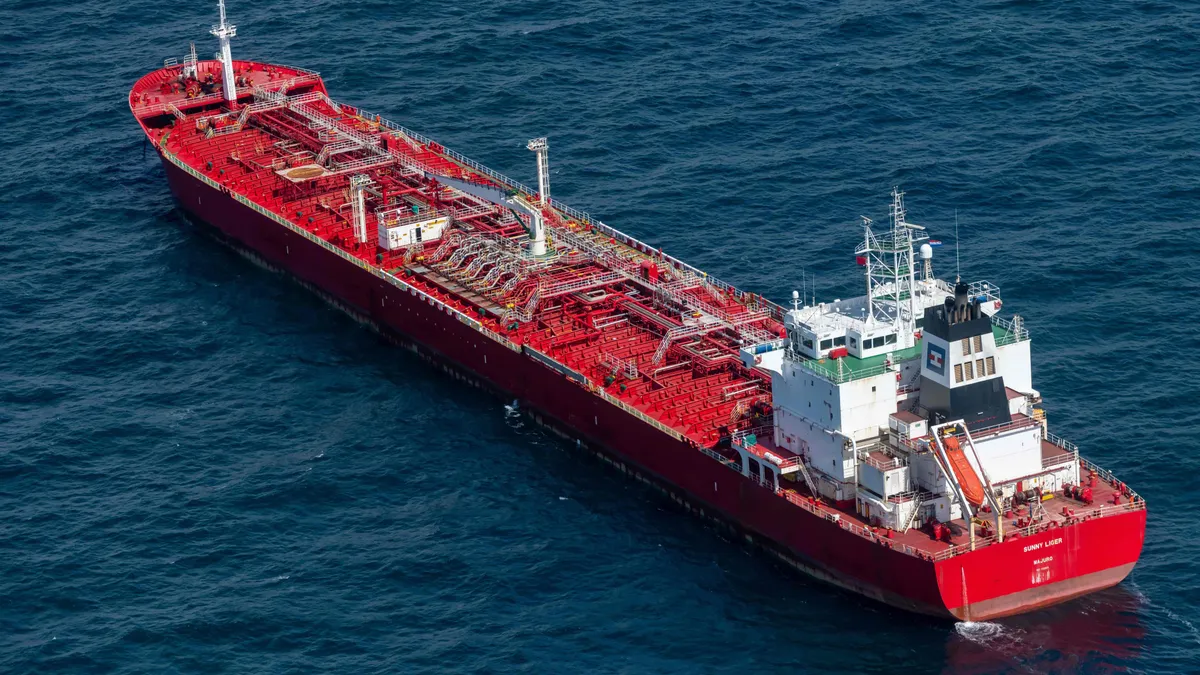The European Union is close to banning Russian oil derivatives transported by sea, particularly Russian diesel, a step that could lead to a scarcity of global supplies and an increase in prices.
It is likely that the impact of the ban on Russian oil derivatives will become more severe than the ban on Russian oil transported by sea and the price ceiling on Russian crude.
In the latest development, the European Union is putting forward a plan to put a price cap on Russian diesel at $100 a barrel, according to information from the specialized energy platform, quoting Bloomberg.
The executive arm of the European Union is studying the ceiling levels for oil derivatives prices, after the Group of 7 offered a price range that partially depends on the price ceiling for Russian oil.
It is scheduled that the European continent will ban the import of Russian oil derivatives, starting from February 5 (2023), as part of a series of Western sanctions in response to the Russian invasion of Ukraine.
Imposing a price cap on oil derivatives
The European Commission proposes imposing a price cap of $100 per barrel on some oil derivatives that trade at a premium to crude oil, such as Russian diesel, and another cap of $45 per barrel that will apply to products that trade at a discount, such as fuel oil. These numbers are not final and may change during the talks. with member states.
The European Union aims to limit Russian revenues and prevent price increases as a result of the scarcity of major derivatives in the global markets.
The EU would have to agree unanimously on price ceiling levels, which would then require approval by the G7.
European Union diplomats will start discussing the ceiling for Russian oil derivatives on Friday, January 26 (2023), and the talks are expected to continue over the next few days.
Fears of a Russian diesel shortage
European officials fear a shortage of Russian diesel after the ban is implemented, and the price cap is intended to ensure that Russian supplies continue to flow to other parts of the world.
Diesel futures are currently trading at around $130 a barrel in northwest Europe, according to data from exchange firm ICE Future Europe.
Platts and rival Argos Media halted some assessments of Russian diesel earlier this month, in preparation for a European ban on seaborne imports.
On January 10 (2023), Platts valued Russian diesel at a discount of $113.50 per ton, or $15.20 per barrel, compared to non-Russian products.
The price ceiling mechanism aims to allow European companies to provide financing and insurance for Russian oil exports, the price of which does not exceed the imposed ceiling.
Although the effect of the price ceiling is expected to be small, the EU’s decision to embargo supplies could have repercussions.
These measures ensure that Russia is deprived of the largest market for diesel, in addition to its inability to find alternative markets.
Where is Russian diesel headed?
G7 officials expect that Russian diesel sales destined for Europe will find alternative markets in Latin America and Africa.
On the other hand, Europe will try to buy diesel from the Middle East and the United States.
These changes may lead to higher shipping costs, especially as some shipments will travel a longer distance.
The decision to impose a price cap on refined derivatives comes after the European Union agreed in late 2022 to apply a cap on Russian crude exports at $60 a barrel.
Some believe that this step helped keep Russian oil in the market, albeit at huge discounts.
Last week, Russia’s Urals crude was at $45.55 a barrel in the Baltic Sea port of Primorsk, while Brent was at $85 a barrel.
The following graphic – prepared by the specialized energy platform – shows diesel exports from the Middle East to Europe during the period from January to September 20 (2022):

Russian oil exports to India
Meanwhile, India and China have become one of the most important destinations for Russian oil after the outbreak of the war in Ukraine.
India’s refiners are looking to buy more Russian oil if prices are right.
Russian oil exports to India reached record levels in 2022, thanks to deep discounts, and it is expected to seek more starting next month as the European Union bans Russian oil derivatives by sea.
Indian refiners can convert cheap Russian oil into fuel, such as diesel, and then sell it to other regions, including Europe, boosting profit margins.
India’s crude imports rose to a record level in 2022, although higher purchases of Russian barrels hindered flows from OPEC countries.
OPEC accounted for about 62% of total oil imports during the period from April to December (2022), compared to about 71% during the same period in 2021, according to government data.
It is expected that Indian refineries will maintain long-term supply from some producers, such as Saudi Arabia, and that any increase in Russian barrels will be done on an immediate and opportunistic basis.
Russian fuel oil flows to India also rose, almost doubling on a monthly basis during December (2022), to reach more than 137,000 barrels per day, according to Kepler data.
related topics..
Also read..

Leave a Reply